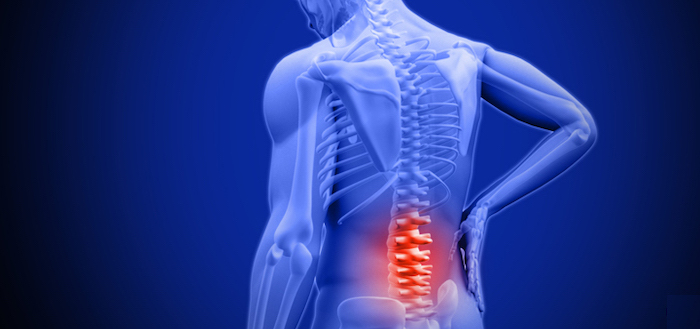
Most episodes of acute lower back pain are caused by damage to your soft tissues, such as the muscles and/or ligaments that support your lumbar spine.
A common injury is a lower back strain, but it’s popularly referred to as a pulled muscle. The pain resulting from a lower back strain can be surprisingly severe, sending many patients to the emergency room.
If this type of injury has happened to you, here’s what you need to know:
Types of Muscle Strains
Lower back muscle strains can be graded into the following types based on the severity:
- Grade I or mild injury causing the muscle fibers to stretch beyond their normal limit
- Grade II or moderate injury where several muscle fibers may tear
- Grade III or severe injury where the entire muscle ruptures
The vast majority of muscle strains are typically graded I, which will usually heal even without treatment. However, even grade I tears can be surprisingly painful, and if left untreated, they may worsen over time.
Symptoms of Lower Back Muscle Strain
A lower back muscle strain usually causes some combination of the following symptoms:
- Localized or diffused lower back pain
- The tightness and/or stiffness in the affected muscle
- Swelling in the affected area
- Redness of the skin over the lower back, caused by bleeding within the muscle tissue
- Difficulty in performing bending and/or twisting movements
While grade I and II injuries may only cause localized pain and may allow you to continue with your normal activities, a grade III sprain typically causes excruciating pain with significant disability.
The pain more commonly starts as a delayed onset muscle soreness (pain that starts a day after the injury takes place) but may appear suddenly in cases of severe injury. Lumbar muscle strains may be accompanied by painful muscle spasms as your body works to stabilize your injury.
Treatment for Lower Back Strain
The healing process of strained muscles may take a few days to weeks. After an initial phase of inflammation, the muscle fibers begin to repair, regenerate, and mature.
Common treatments that you can employ at home are:
- Mechanical stimulation. Soon after you strain your back, it may be advisable to rest for a day to prevent exacerbation of your pain. After this period, gentle stretching, walking, or other gentle movements; massage therapy; and/or manual manipulation can help effectively enhance the healing process. These techniques facilitate the passage of blood and healing nutrients to the muscle tissue. If you rest for too long, it can lead to stiffness and possibly the formation of scar tissue, preventing the regeneration of muscle fibers.
- Ice therapy. Intermittent and controlled application of an ice pack on the affected area may help numb the pain and control inflammation. Ice application for 20 minutes is usually sufficient and can be repeated multiple times throughout the day. Typically, ice therapy is best used during the first few days of your injury when the inflammation and swelling are most severe. Using an ice pack for too long may constrict the blood vessels, preventing blood flow and slowing down the healing process. Avoid placing ice directly against the skin. Place a thin moist or dry cloth between the ice in your skin.
- Heat therapy. Placing a heat pack over the affected area can help dilate your blood vessels, allowing more blood to reach the injured muscles. Use heat therapy a few days after your injury, when the bleeding within the muscle tissue has stopped and the skin does not appear red.
- Topical pain relievers. Pain-relieving gels or creams containing methyl salicylate or menthol can be effective in controlling muscle pain. Avoid oral and/or injectable pain relievers because they can concentrate in your bloodstream and may prevent the normal healing process of the muscle tissue.
Severe grade III injuries may require medical intervention or even surgical treatment.
The use of correct, supported lifting and lowering techniques, warming up before you hit the squat rack at the gym, and stretching your lower back and hamstrings regularly can keep your lumbar muscles well-conditioned and flexible, preventing strain injuries. If your lower back strain does not heal with self-care, consult your doctor for an appropriate treatment plan to prevent the progression of the condition.
If you develop pain that extends from your back into the legs, or if you experience numbness, tingling, and/or weakness in your legs, consult your doctor immediately these symptoms may indicate a more serious injury to your lower back.
Precision Pain Care and Rehabilitation has two convenient locations in Richmond Hill – Queens and New Hyde Park – Long Island. Call the Richmond Hill office at (718) 215-1888, or (516) 419-4480 for the Long Island office, to arrange an appointment with our Interventional Pain Management Specialist, Dr. Jeffrey Chacko.













